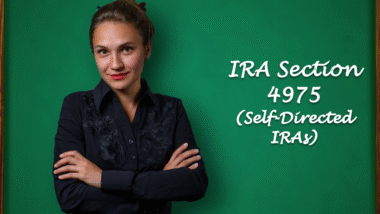This report draws on the provisions of Internal Revenue Code (IRC) Section 121, known as the Principal Residence Exclusion, detailing the eligibility requirements, exclusion limits, and specialized applications for homeowners and real estate investors.
I. Overview of the Principal Residence Exclusion
The Principal Residence Exclusion (IRC Section 121) is recognized as one of the most generous tax preferences available to homeowners. The underlying logic of the law is to provide a tax break to those selling their primary residence, helping them purchase a replacement home.
Under Section 121, an individual may exclude from gross income up to $250,000 of gain realized from the sale of a principal residence. Married couples filing a joint return can generally exclude up to $500,000 of gain.
This exclusion is available to taxpayers of any age and can be utilized as often as every two years. The rules governing this exclusion were simplified and expanded by the Taxpayer Relief Act of 1997. If a taxpayer can exclude all of the gain, they generally do not need to report the sale on their tax return.
II. The Ownership and Use Tests
To qualify for the exclusion, the property must meet the ownership and use tests. The key requirements are:
- Principal Residence: The property sold must be the taxpayer’s principal residence, not an investment property.
- Two-out-of-Five-Year Rule: During the five-year period ending on the date of the sale, the taxpayer must have owned and used the property as a principal residence for periods aggregating two years or more.
- Calculation of Time: The two-year period is counted as 730 days or twenty-four full months.
- Flexibility of Use: The two-year use period does not need to be concurrent. Short, temporary absences (even if the home is rented out) count as periods of use.
Requirements for Married Couples
For married individuals filing a joint return to qualify for the full $500,000 exclusion:
- Use Test: Both spouses must meet the two-year use test.
- Ownership Test: Only one spouse needs to fulfill the ownership test (meaning title can be in the name of only one spouse).
- Frequency Limit: Neither spouse must have used the principal residence exclusion for any other sale or exchange during the previous two years.
III. Limitations, Conversions, and Nonqualified Use
While the exclusion is generous, certain circumstances, particularly involving rental or business use, limit the available benefit.
1. Nonqualified Use Ratio
A limitation on the exclusion relates to “nonqualified use,” which is defined as any use other than as a primary dwelling place. This issue primarily arises when a property is converted from a rental or business use into a primary residence.
In cases of nonqualified use, the exclusion is modified by the nonqualified use ratio. This ratio, found in Section 121(b)(5)(B), uses the time allocated to nonqualified use (numerator) divided by the total time of ownership (denominator). The resulting portion of the gain is not eligible for exclusion.
Congress further limited the exclusion for converted property in the Housing Assistance Tax Act of 2008 by stipulating that only nonqualified use that occurs since January 1, 2009, counts toward the ratio.
2. Depreciation Recapture
The capital gains exclusion shall not apply to any gains attributable to depreciation. Taxpayers must pay tax on gain from the sale of a principal residence to the extent of any depreciation allowable with respect to business or rental use after May 6, 1997 (known as recapturing depreciation).
3. Loophole for Converting Primary Residence to Rental
The rules are generally more flexible when a primary residence is converted into a rental property. An exception under section 121(b)(5)(C)(ii)(I) provides that nonqualified use that occurs after the last date the property was used as a primary residence is ignored. However, the taxpayer must still meet the standard 2-out-of-5-year use test at the time of sale.
4. Property Acquired Through Like-Kind Exchange (Section 1031)
To prevent business or investment gain that was deferred under IRC Section 1031 from being permanently excluded under Section 121:
- If a property is acquired in a Section 1031 like-kind exchange and later converted to a principal residence, the Section 121 exclusion will not apply if the sale occurs during the 5-year period starting on the date the property was originally acquired.
IV. Special Circumstances and Partial Exclusions
Even if a taxpayer fails to meet the full two-year ownership and use tests, a partial exclusion may be available if the sale is primarily due to certain qualifying events:
- Change in place of employment.
- Health reasons.
- Unforeseen circumstances.
The reduced exclusion is calculated as a pro-rata amount of the maximum allowable exclusion ($250,000 or $500,000) based on the length of time the ownership or use tests were met, divided by 24 months or 730 days.
For members of the uniformed services or Foreign Service, the running of the five-year period for the ownership and use tests can be suspended for up to ten years if they are called to active duty away from home.
V. Calculation of Gain
To compute the potential taxable gain on the sale of a home, several amounts must first be determined:
- Amount Realized: This is calculated by taking the selling price (total sales proceeds received) minus the selling expenses (such as broker commissions, title, and closing costs).
- Adjusted Basis: This refers to the original cost basis (purchase price plus certain settlement fees) adjusted up or down over time, often including costs of capital improvements.
- Capital Gain (or Loss): Calculated as the Amount Realized minus the Adjusted Basis.
Once the capital gain is determined, the tax calculation involves subtracting the applicable maximum allowable exclusion ($250,000 or $500,000).
The Principal Residence Exclusion operates somewhat like a high-value insurance policy built into your home equity. It protects the wealth you create simply by living in your house, but it requires diligent adherence to strict timekeeping rules—you must prove you “paid your premiums” by maintaining ownership and use for the qualifying two-year period within the critical five-year window, ensuring that the profit you reap remains safely tax-sheltered.



